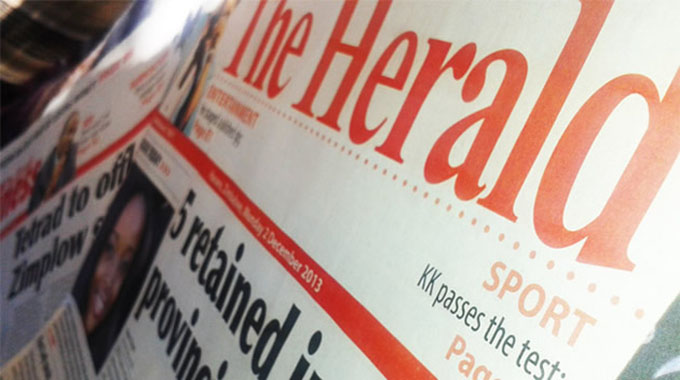Housing needs of PWDs vital

Pardon Gotora Urban Scape
Persons living with disabilities have always been at the periphery when it comes to access to basic services like education, health, recreational facilities and shelter, among a whole host of issues that affect their daily lives.
Growing up in the village, there were a couple of people living with disabilities that were concealed and/or confined to homes such that no visitor would see them except the confidante to the family.
They could not attend school and play with children of the same age. Therefore, before they knew it, they were already deprived of the same birth rights accorded to their peers.
I vividly remember a sad story when, as primary school kids walking some kilometres from school, we met a gentlemen living with albinism for the very first time.
Scared and shell-shocked, we all took to the heels in different directions.
The incident turned out to be a “bedtime story” back in our round-hut. Telling only one or two people whom we met on arrival would destroy the “breaking news” concept.
So it needed to be head by all folks at once. My father was in town and would come once a month, so I made sure that I was the first person to also break the news to him.
Narrating the encounter to everyone exacerbated my perception on such people or anyone else living with disabilities. The narrative that I got from my granny, who seemed to “know it all,” was that giving birth to a disabled child was a curse and a taboo in the village.
Absurd as it sounds now, that was the real explanation I got.
Just like twins, she said, back in history, such children would be killed. No one rebuked my granny’s explanation so it stuck at the back of my mind. To make matters worse, you would not think of any whom you would have seen in person and relate to granny’s story.
You would hear that there was so and so who was disabled at that homestead, but never see him or her.
When I began to see light, I later realised that there were a couple of factors that could have prompted the parents of people with disabilities to behave in such a manner as well as all other people in my environs who nurtured me back in the village.
In my view, the biggest challenge had to do with stigma.
Firstly, stigmatisation would come from the husband of the innocent woman who would have delivered the child. The second would come from closer family members and thirdly from the society at large.
The chain was too long that the mother, if not divorced for that, compelled by circumstances, would conceal the baby.
The other aspect had to do with mere ignorance. The only body that I knew to be championing the cause of persons living with disability was Jairos Jiri, because of Paul Matavire and the Jairosi Jiri Band, may his dear departed soul rest in eternal peace.
Those in my village did not know what to do with these children. Poverty did not help the situation either.
For the blind, no one would afford the walking sticks and braille. Those with walking difficulties would not afford the wheelchair, worse still to push the same in sand. Sign language was a nightmare to all.
I doubt very much if teachers at Matsenga Primary School in Uzumba, where I did my primary education, were able to handle all such cases in their line of duty.
All these factors were a hindrance to persons living with disabilities back in my village. They were deprived at a very tender age and that was the root cause of discrimination and inequality.
The foundation to their lives was destroyed, compelling them to survive at the mercy of charity, thereby inculcating dependence syndrome from a very young age.
No one ever imagined their capabilities at any given moment. Yet the old adage says “disability does not mean inability”.
Fast forward to 2020, it is sad to realise that the same discrimination and inequality still persists to some extent. Admittedly, perceptions have changed with the passage of time. When you attend workshops and seminars, there are robust discussions on opportunities for persons living with disabilities.
However, the discussions are not matched with implementation of the resolutions of living no one behind or inclusivity.
Houses are built without considerations for persons with disabilities, overlooking that anyone can be maimed at any given time.
Old public buildings were built without same, although attempts are made to erect ramps.
Access to public places by persons with disabilities is still a challenge. Imagine the challenges one faces when, sitting on a wheelchair, with no helper, but trying to access a door handle to gain entry.
Allocation of housing to persons living with disabilities is still minimal.
I have seen a lot of persons with disabilities in good jobs or income generating projects, and therefore, have means to pay to access their own shelter without any charity if given the opportunity.
But others, since they were deprived at a tender age, have limited capabilities to raise the required funding and are left homeless.
All these categories need a soft-landing spot from public sector housing policies.
It is still lagging, but there is room for improvement in all facets. Equal opportunities are the panacea to challenges encountered by persons living with disabilities.







Comments